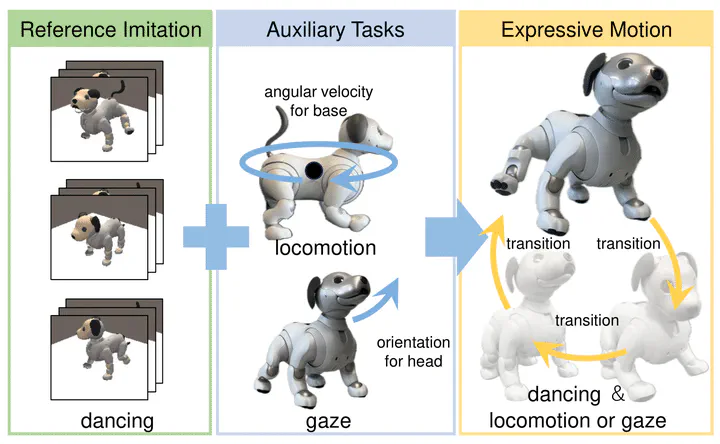DFM: Deep Fourier Mimic for Expressive Dance Motion Learning
 Deep Fourier Mimic
Deep Fourier MimicAbstract
As entertainment robots gain popularity, the demand for natural and expressive motion, particularly in dancing, continues to rise. Traditionally, dancing motions have been manually designed by artists, a process that is both labor-intensive and restricted to simple motion playback, lacking the flexibility to incorporate additional tasks such as locomotion or gaze control during dancing. To overcome these challenges, we introduce Deep Fourier Mimic (DFM), a novel method that combines advanced motion representation with Reinforcement Learning (RL) to enable smooth transitions between motions while concurrently managing auxiliary tasks during dance sequences. While previous frequency domain based motion representations have successfully encoded dance motions into latent parameters, they often impose overly rigid periodic assumptions at the local level, resulting in reduced tracking accuracy and motion expressiveness, which is a critical aspect for entertainment robots. By relaxing these locally periodic constraints, our approach not only enhances tracking precision but also facilitates smooth transitions between different motions. Furthermore, the learned RL policy that supports simultaneous base activities, such as locomotion and gaze control, allows entertainment robots to engage more dynamically and interactively with users rather than merely replaying static, pre-designed dance routines.
Type
Publication
In IEEE International Conference on Robotics and Automation